💥💥💞💞欢迎来到本博客❤️❤️💥💥
🏆博主优势:🌞🌞🌞博客内容尽量做到思维缜密,逻辑清晰,为了方便读者。
⛳️座右铭:行百里者,半于九十。
📋📋📋本文目录如下:🎁🎁🎁
目录
使用 MATLAB 和 XBee 连续监控温度传感器无线网络研究
💥1 概述
在本文中,MATLAB 用于通过与使用 XBee 系列 2 模块构建的温度传感器无线网络进行交互,连续监控整个公寓的温度。每个XBee边缘节点从多个温度传感器读取模拟电压(与温度成线性比例)。读数通过协调器XBee模块传输回MATLAB。本文说明了如何操作、获取和分析来自连接到多个 XBee 边缘节点的多个传感器网络的数据。数据采集时间从数小时到数天不等,以帮助设计和构建智能恒温器系统。
无线传感器技术是一种用于监测和收集环境数据的无线网络系统。在本文中,我们将使用MATLAB和XBee无线模块来实现对温度传感器网络的连续监控。
首先,我们需要准备以下材料和设备:
1. 温度传感器:可以使用数字温度传感器,例如DS18B20。
2. XBee无线模块:用于传输数据的无线通信模块。
3. XBee模块适配器:将XBee模块连接到计算机的USB端口。
4. 计算机:安装MATLAB和XBee模块驱动程序的计算机。
接下来,我们需要进行以下步骤来实现连续监控温度传感器无线网络:
1. 连接XBee模块:将XBee模块插入XBee模块适配器,并将适配器连接到计算机的USB端口。确保XBee模块和计算机之间建立了正确的连接。
2. 配置XBee模块:使用XBee配置工具来配置XBee模块的参数。设置模块的网络ID、频道和传输速率等参数,以确保所有模块在同一无线网络中。
3. 编写MATLAB代码:使用MATLAB编写代码来接收和处理从XBee模块接收到的数据。可以使用MATLAB的串口通信功能来实现与XBee模块的通信。在代码中,可以设置一个循环来持续接收和处理传感器数据。
4. 连接温度传感器:将温度传感器连接到XBee模块的输入引脚。确保传感器正确连接,并且传感器的数据可以通过XBee模块传输。
5. 数据处理和分析:使用MATLAB代码来处理和分析接收到的温度数据。可以将数据保存到文件中,绘制图表或执行其他分析操作。
通过以上步骤,我们可以实现对温度传感器无线网络的连续监控。使用MATLAB和XBee模块,我们可以方便地接收和处理传感器数据,并进行进一步的分析和研究。
使用 MATLAB 和 XBee 连续监控温度传感器无线网络研究
摘要
本文研究了使用 MATLAB 和 XBee 无线通信模块来连续监控温度传感器无线网络的方法。通过部署多个温度传感器节点,并使用 XBee 模块构建无线传感器网络,我们实现了对整个监测区域温度的实时、连续监控。数据采集、传输、处理和分析均在 MATLAB 环境中完成,为智能恒温器系统的设计提供了有力支持。
引言
无线传感器网络(WSN)已经成为现代科技领域中的热门话题,广泛应用于环境监测、农业、医疗保健和工业自动化等领域。温度传感器网络作为 WSN 的一种重要类型,在实时监测和控制环境温度变化方面发挥着重要作用。本文利用 MATLAB 和 XBee 模块,设计并实现了一种连续监控温度传感器无线网络的系统。
系统组成
1. 温度传感器
我们选用了数字温度传感器,如 DS18B20,它能够提供高精度的温度读数,并通过数字接口与 XBee 模块连接。
2. XBee 无线模块
XBee 模块是一种低功耗、低成本且易于使用的无线通信模块,适用于构建无线传感器网络。在本文中,我们使用了 XBee 系列 2 模块,它支持多种通信协议,包括 Zigbee,非常适合于温度传感器网络的应用。
3. XBee 模块适配器
为了将 XBee 模块连接到计算机,我们使用了 XBee 模块适配器,该适配器通过 USB 端口与计算机连接,实现了计算机与 XBee 模块的通信。
4. 计算机与 MATLAB
计算机上安装了 MATLAB 软件和 XBee 模块驱动程序,用于接收、处理和分析来自无线传感器网络的数据。
系统实现步骤
1. 连接 XBee 模块
将 XBee 模块插入 XBee 模块适配器,并将适配器连接到计算机的 USB 端口。确保 XBee 模块和计算机之间建立了正确的连接。
2. 配置 XBee 模块
使用 XBee 配置工具来配置 XBee 模块的参数,包括网络 ID、频道和传输速率等,以确保所有模块在同一无线网络中正常工作。
3. 编写 MATLAB 代码
使用 MATLAB 编写代码来接收和处理从 XBee 模块接收到的数据。MATLAB 的串口通信功能用于实现与 XBee 模块的通信。在代码中,设置一个循环来持续接收和处理传感器数据,并将数据存储到文件中。
4. 连接温度传感器
将温度传感器连接到 XBee 模块的输入引脚,确保传感器正确连接,并且传感器的数据可以通过 XBee 模块传输。
5. 数据处理和分析
使用 MATLAB 代码来处理和分析接收到的温度数据。可以对数据进行校准、滤波和绘图等操作,以直观地展示温度变化趋势。此外,还可以设置阈值进行温度异常检测,并采取相应的控制措施。
实验结果与分析
在实验中,我们部署了多个温度传感器节点,并在 MATLAB 中编写了相应的代码来接收和处理数据。数据采集时间持续了数天,我们记录了公寓内不同位置的温度数据,并进行了详细的分析。
1. 数据采集与存储
温度数据每两分钟采集一次,并存储在文本文件中。文件名为 twoweekstemplog.txt,包含了整个数据采集周期内的所有温度数据。
2. 数据处理
使用 MATLAB 读取并处理数据文件,对数据进行校准和绘图。我们绘制了公寓内所有传感器位置的温度变化趋势图,并分析了不同房间的温度变化特点。
3. 数据分析
通过分析数据,我们发现了一些有趣的现象。例如,某些房间由于暖气不足,温度上升较慢;而某些室外温度传感器在某些时间段内出现了异常数据,可能是由于传感器故障或环境因素导致的。我们根据这些数据对暖气系统进行了调整,并修复了故障传感器。
结论
本文介绍了使用 MATLAB 和 XBee 模块连续监控温度传感器无线网络的方法。通过部署多个温度传感器节点,并利用 XBee 模块构建无线传感器网络,我们实现了对整个监测区域温度的实时、连续监控。MATLAB 的数据处理和分析功能为智能恒温器系统的设计提供了有力支持。这种方法具有广泛的应用前景,可以应用于环境监测、农业、医疗保健和工业自动化等领域。
📚2 运行结果

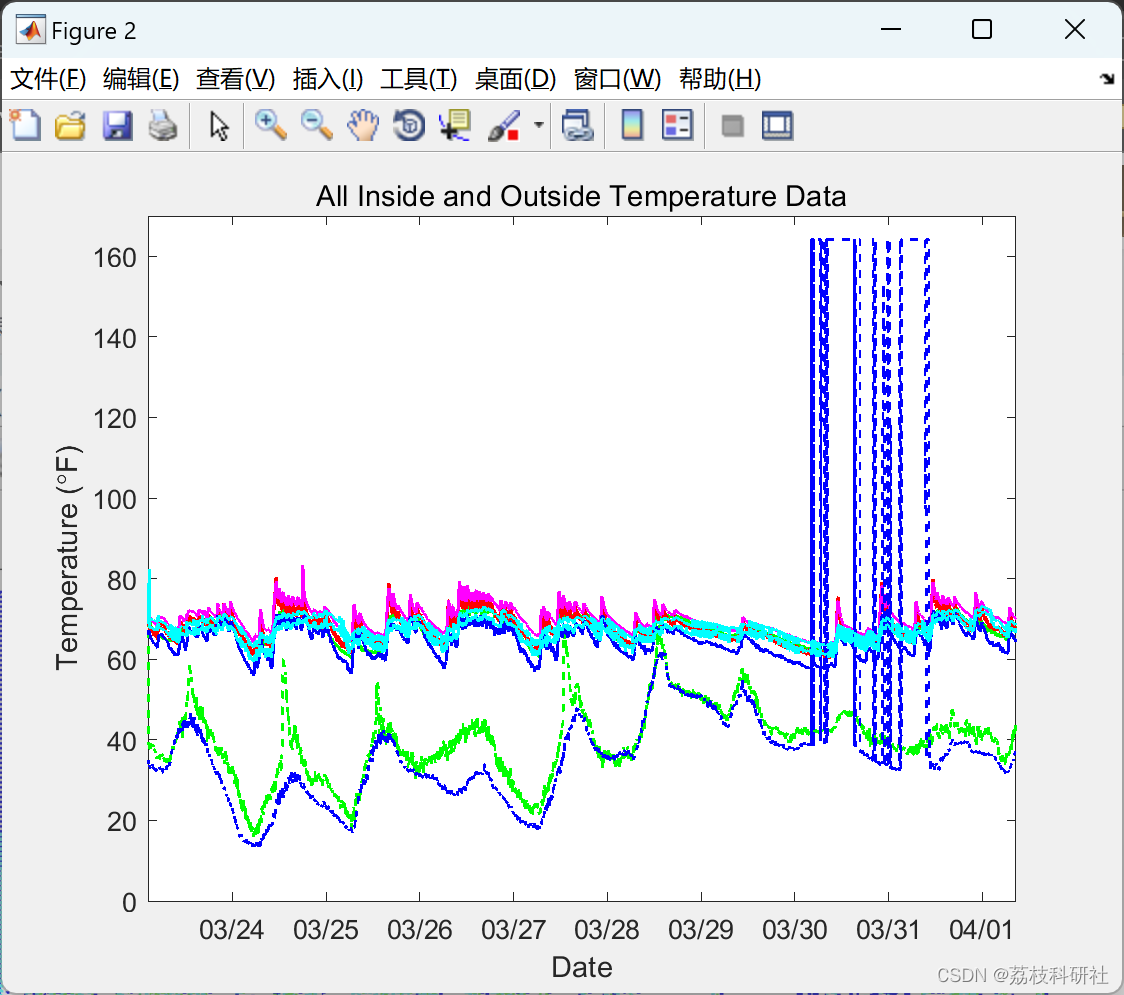
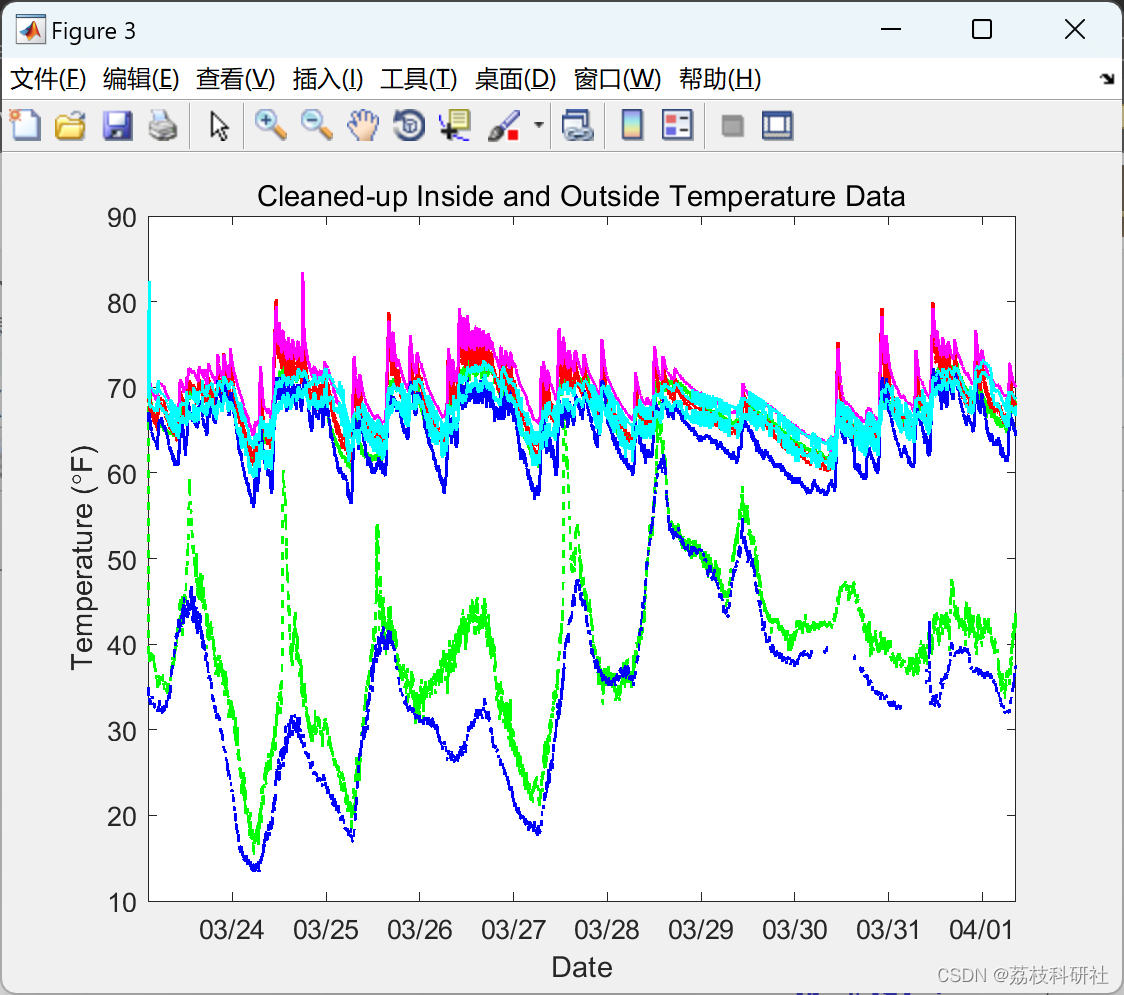
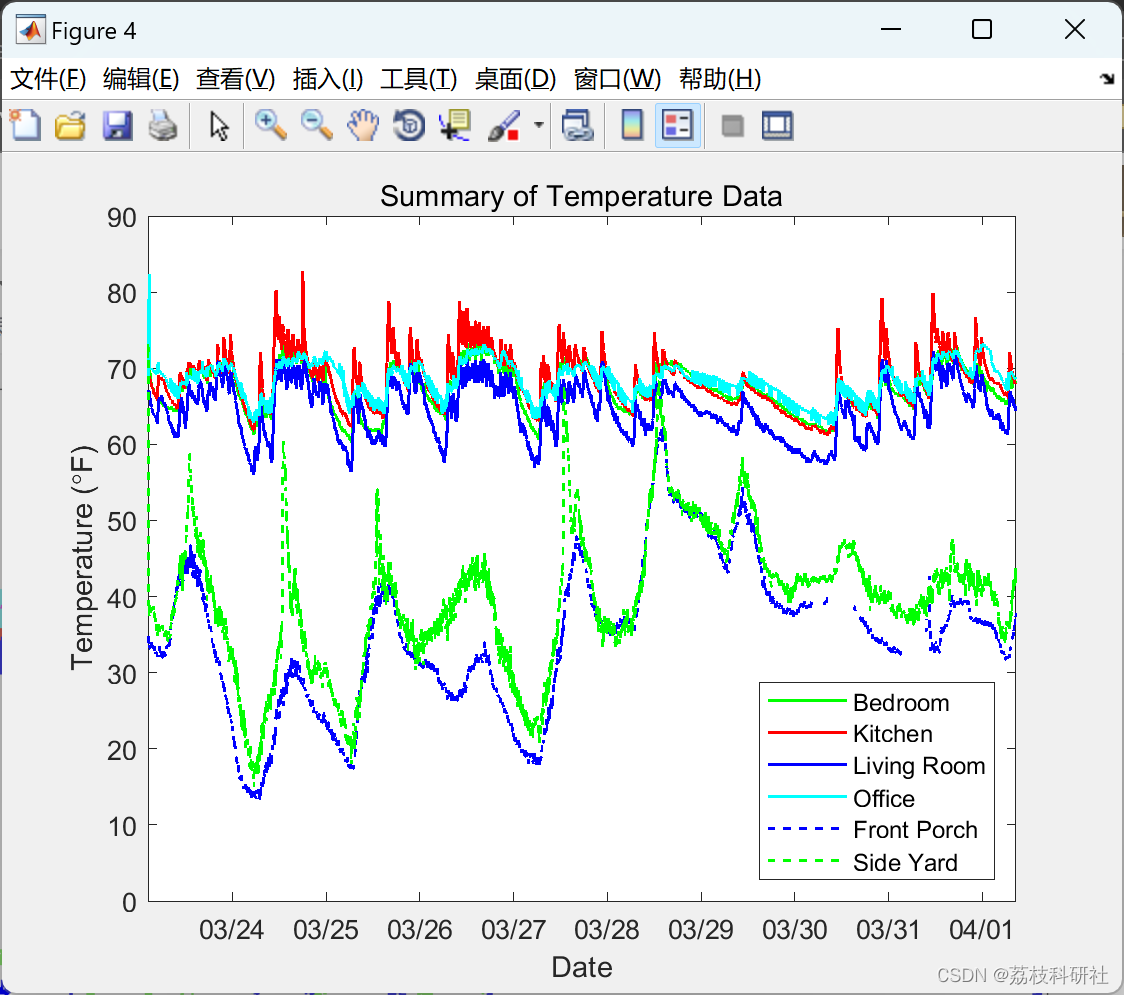
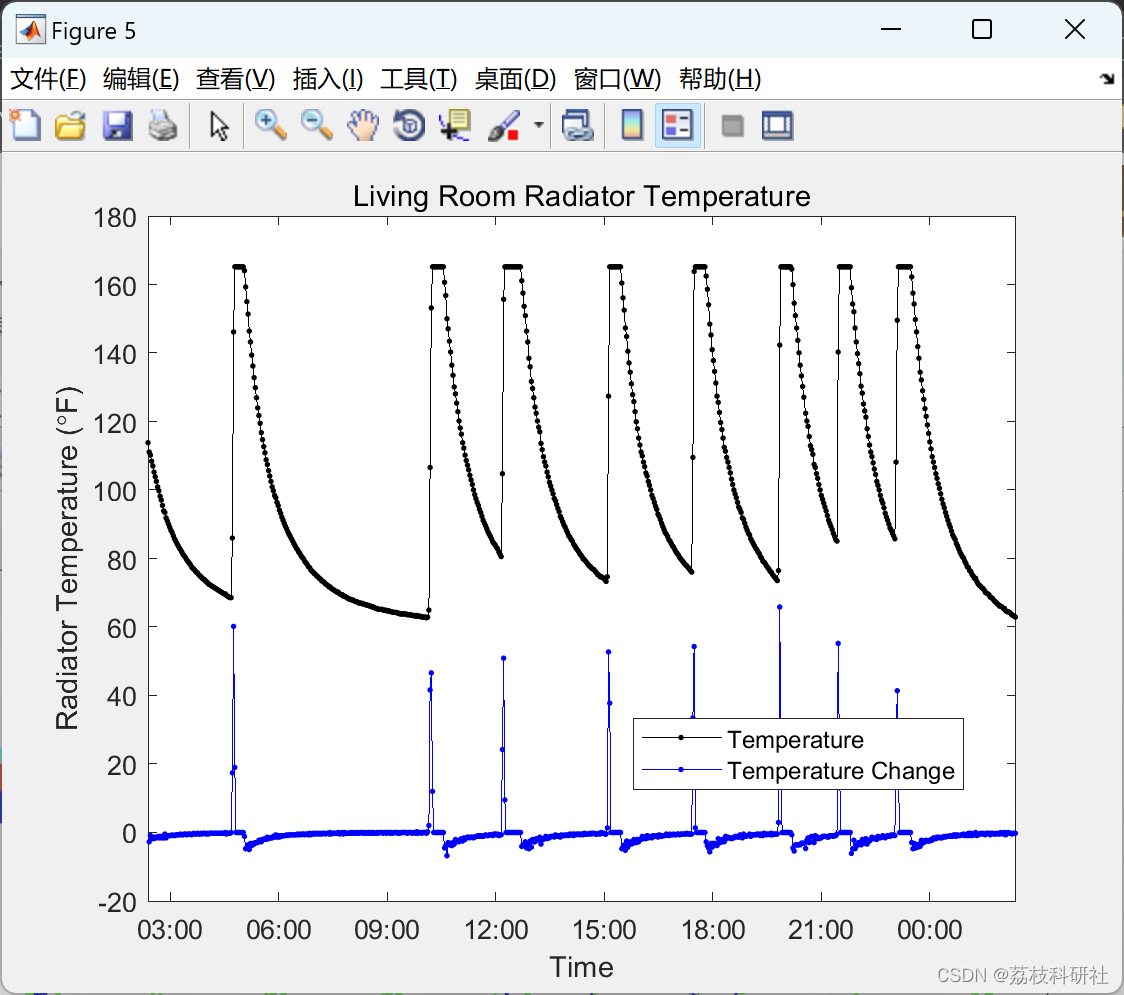
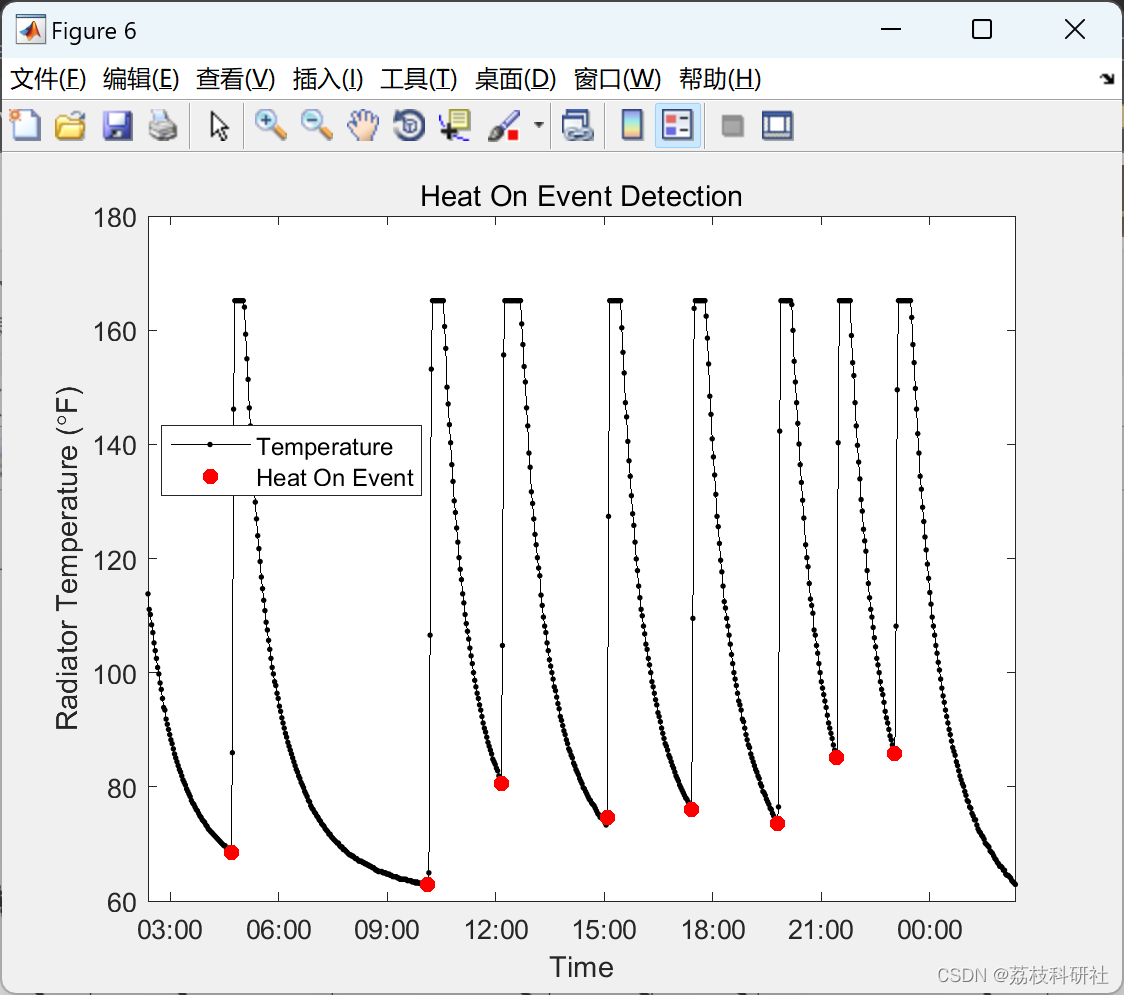
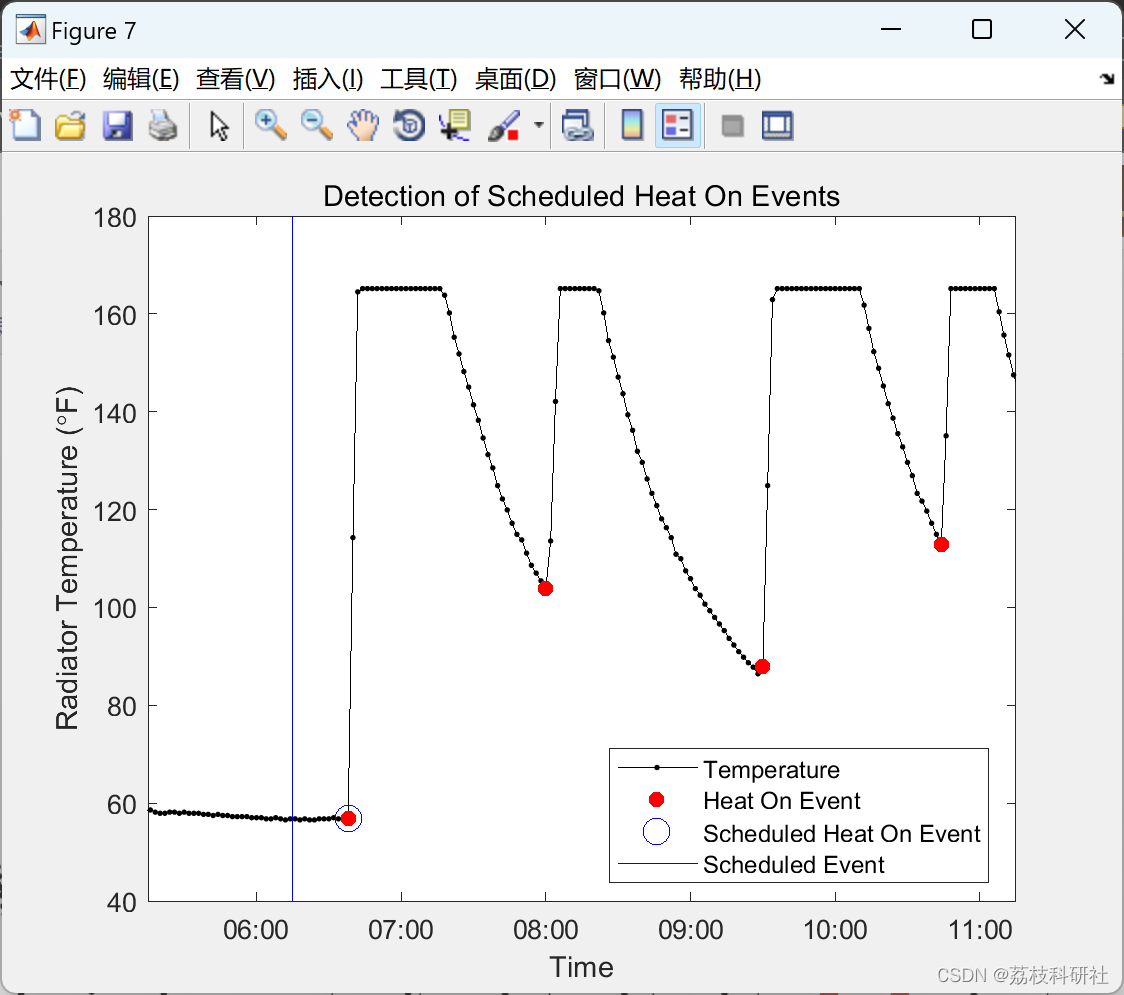


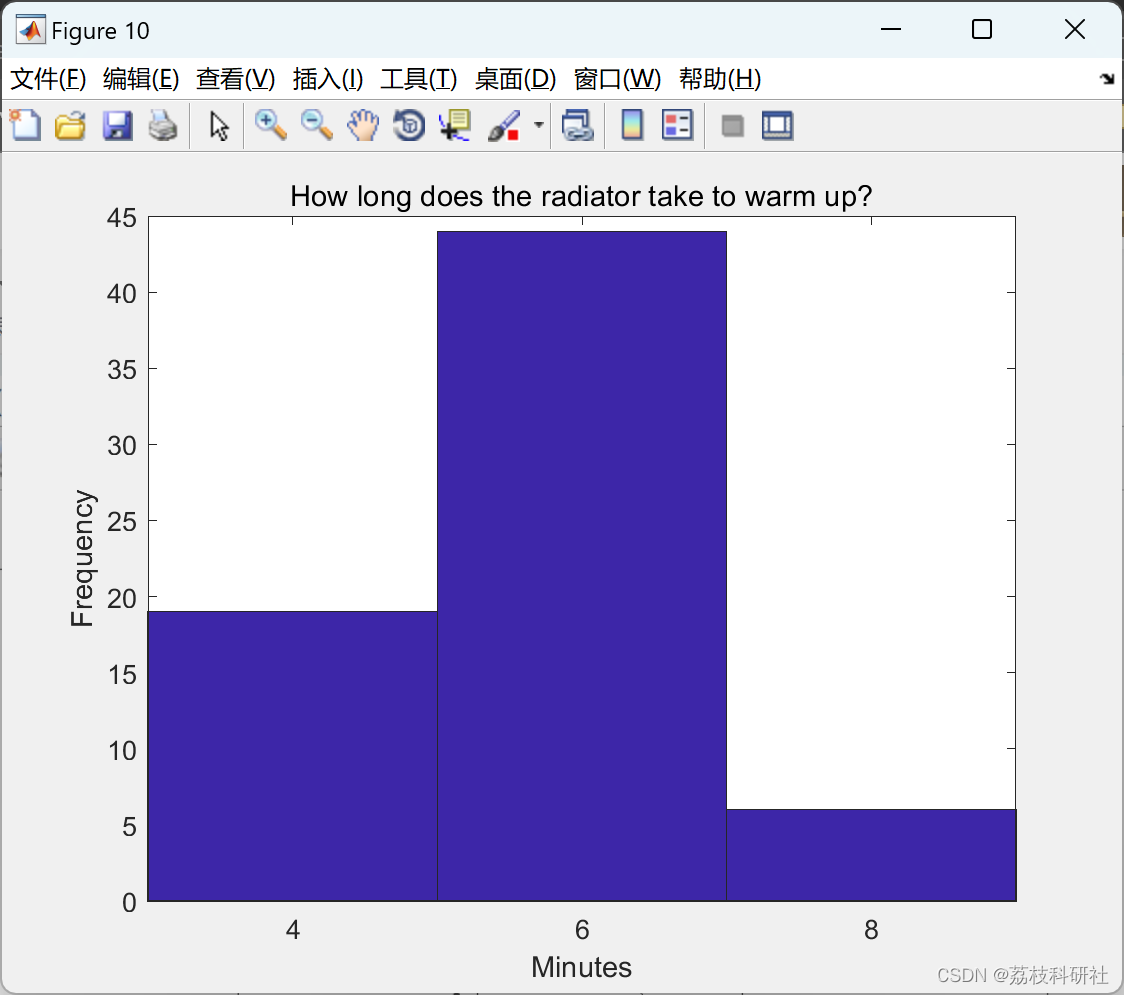

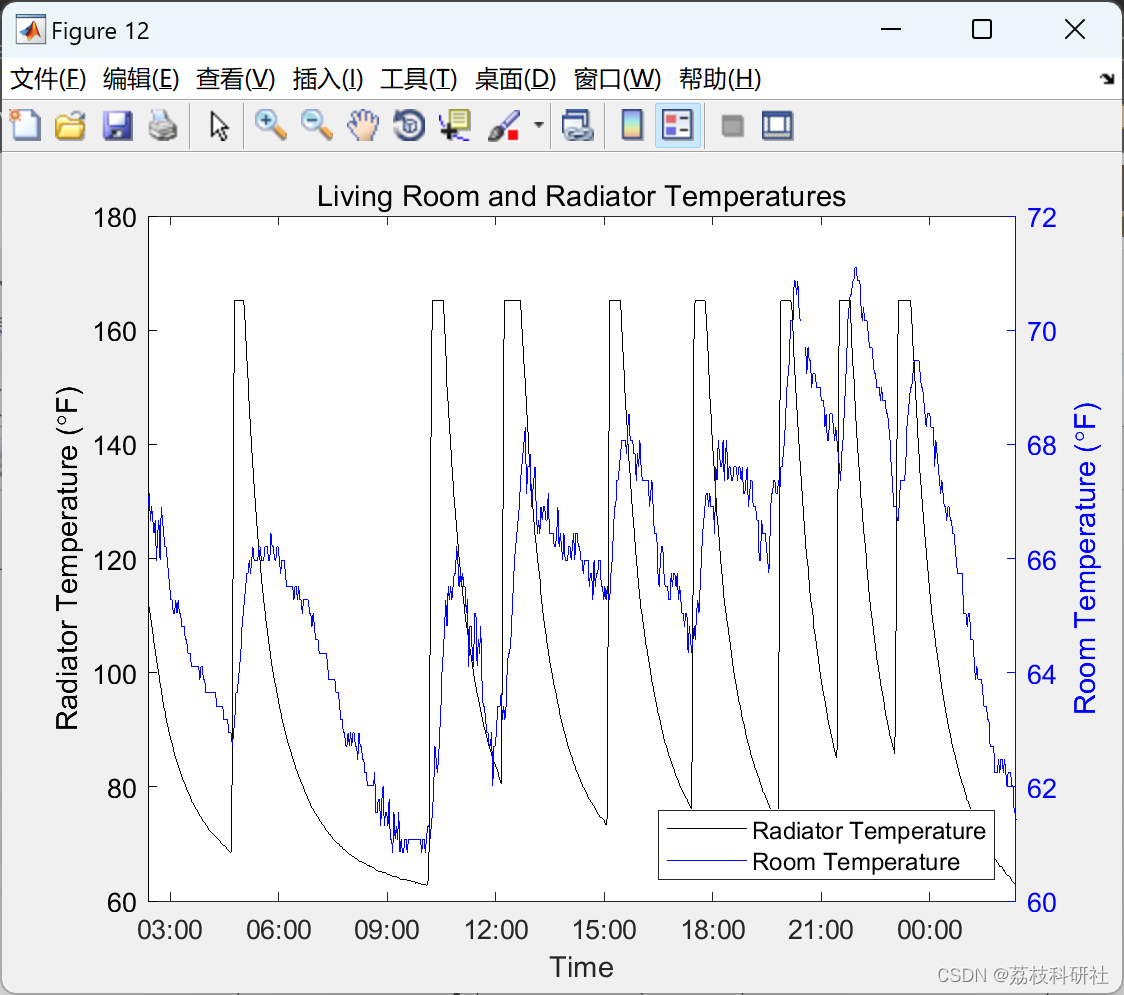
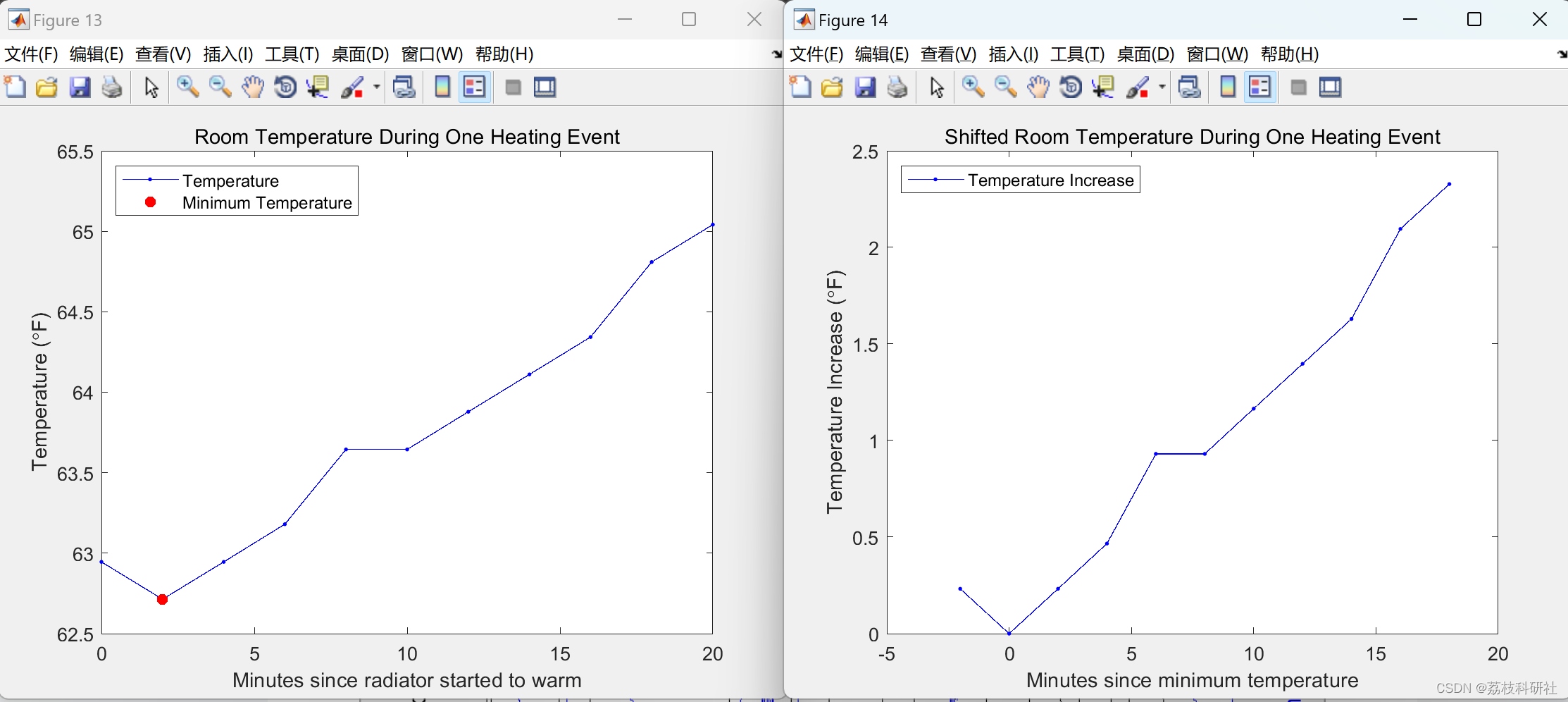
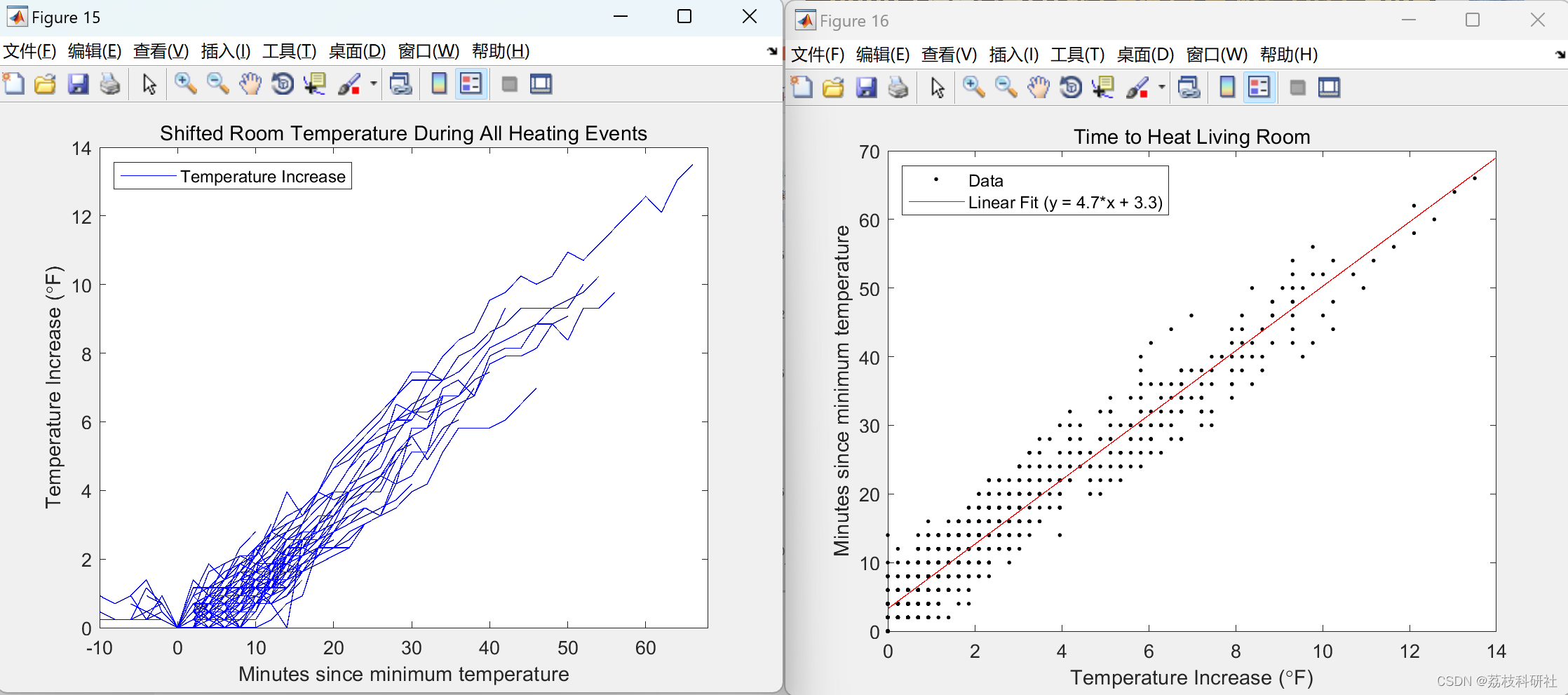


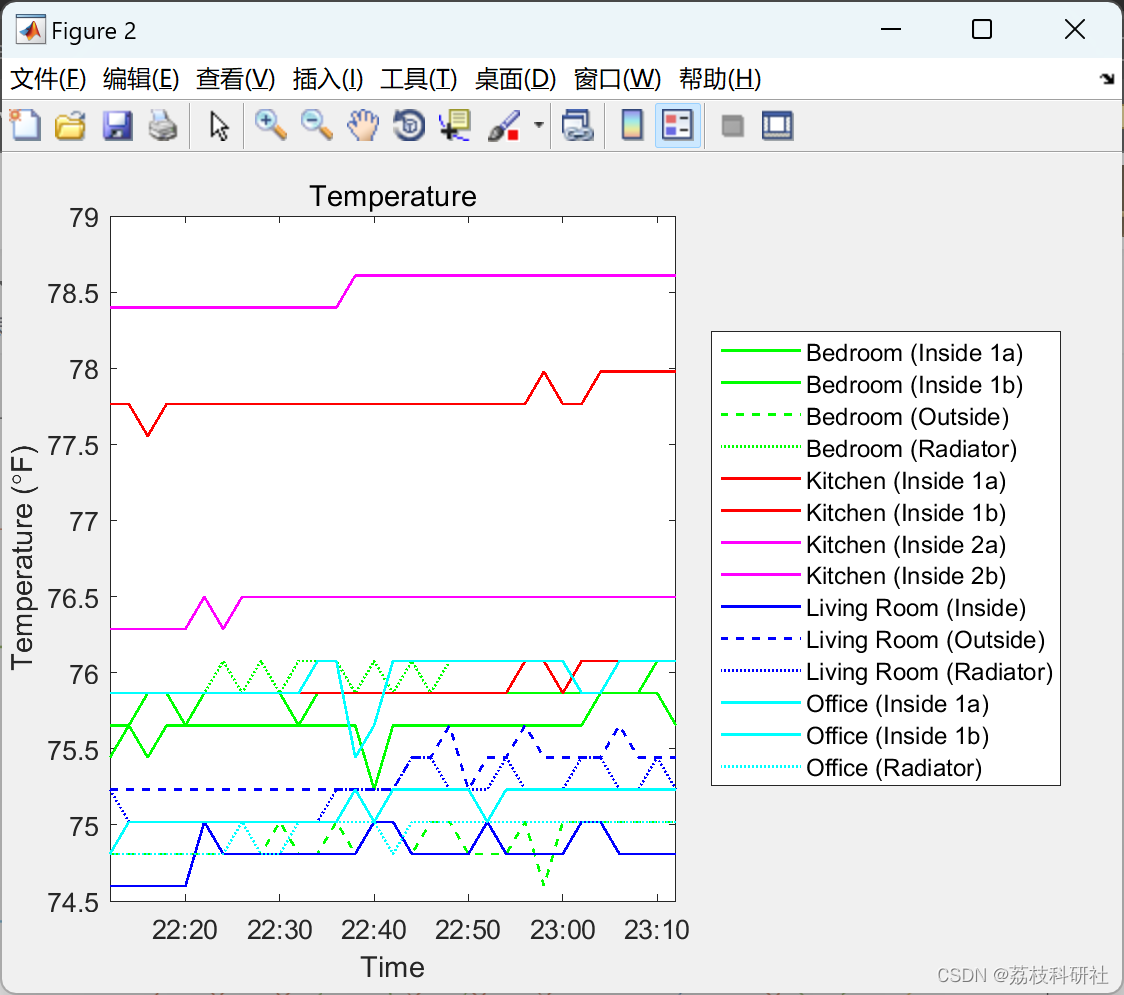

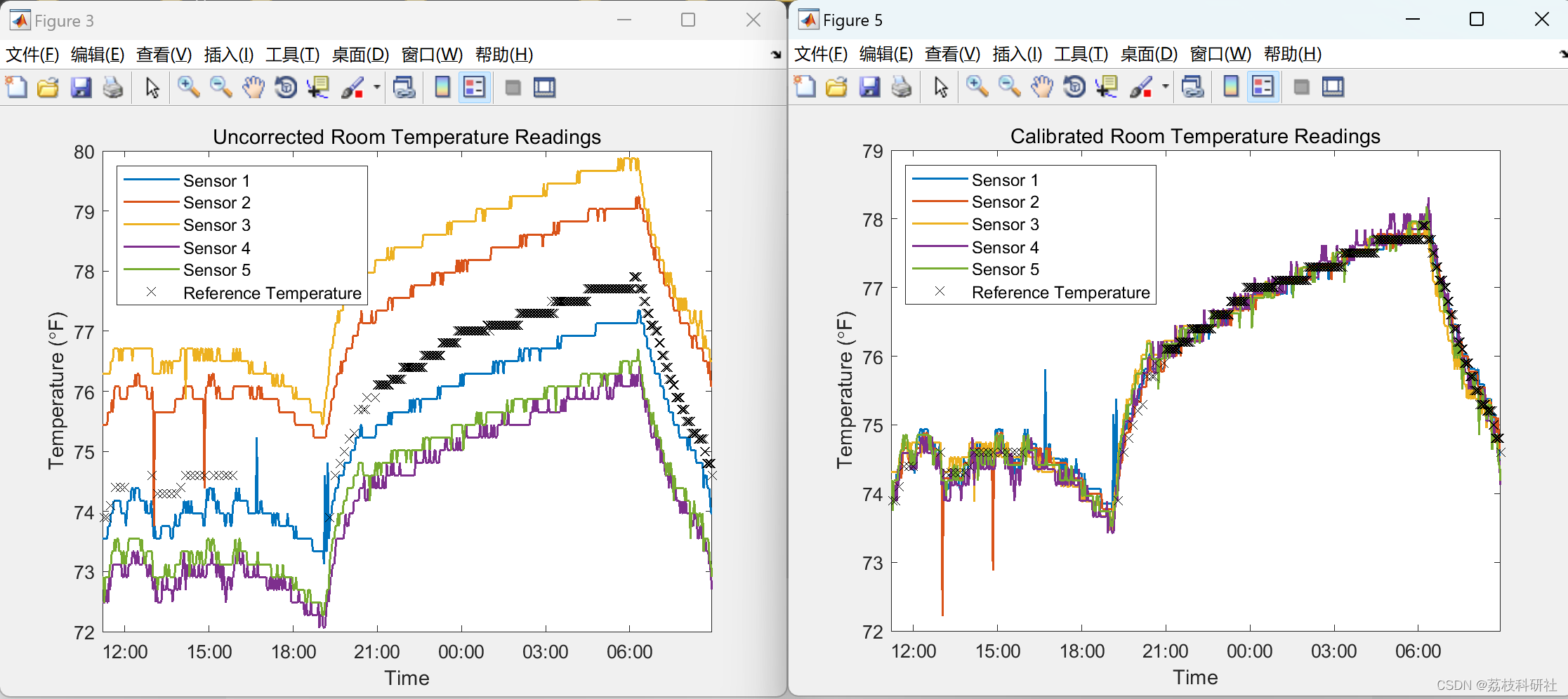 部分代码:
部分代码:
%% Overview of Data
% As I mentioned in a previous post, I collected the temperature every two
% minutes over the course of 9 days. I placed 14 sensors in my apartment: 9
% located inside, 2 located outside, and 3 located in radiators. The data
% is stored in the file <../twoweekstemplog.txt |twoweekstemplog.txt|>.
[tempF,ts,location,lineSpecs] = XBeeReadLog('twoweekstemplog.txt',60);
tempF = calibrateTemperatures(tempF);
plotTemps(ts,tempF,location,lineSpecs)
legend('off')
xlabel('Date')
title('All Data Overview')
%%
% _Figure 1: All temperature data from a 9 day period._
%
% That graph is a bit too cluttered to be very meaningful. Let me remove
% the radiator data and the legend and see if that helps.
notradiator = [1 2 3 5 6 7 8 9 10 12 13];
plotTemps(ts,tempF(:,notradiator),location(notradiator),lineSpecs(notradiator,:))
legend('off')
xlabel('Date')
title('All Inside and Outside Temperature Data')
%%
% _Figure 2: Just inside and outside temperature data, with radiator data removed._
%
% Now I can see some places where one of the outdoor temperature sensors
% (blue line) gave erroneous data, so let's remove those data points. This
% data was collected in March in Massachusetts, so I can safely assume the
% outdoor temperature never reached 80 F. I replaced any values above 80 F
% with |NaN| (not-a-number) so they are ignored in further analysis.
outside = [3 10];
outsideTemps = tempF(:,outside);
toohot = outsideTemps>80;
outsideTemps(toohot) = NaN;
tempF(:,outside) = outsideTemps;
plotTemps(ts,tempF(:,notradiator),location(notradiator),lineSpecs(notradiator,:))
legend('off')
xlabel('Date')
title('Cleaned-up Inside and Outside Temperature Data')
%%
% _Figure 3: Inside and outside temperature data with erroneous data removed._
%
% I'll also remove all but one inside sensor per room, and give the
% remaining sensors shorter names, to keep the graph from getting too
% cluttered.
show = [1 5 9 12 10 3];
location(show) = ...
{'Bedroom','Kitchen','Living Room','Office','Front Porch','Side Yard'}';
plotTemps(ts,tempF(:,show),location(show),lineSpecs(show,:))
ylim([0 90])
legend('Location','SouthEast')
xlabel('Date')
title('Summary of Temperature Data')
%%
% _Figure 4: Summary of temperature data with only one inside temperature
% sensor per room with outside temperatures._
%
% That looks much better. This data was collected over the course of 9
% days, and the first thing that stands out to me is the periodic outdoor
% temperature, which peaks every day at around noon. I also notice a sharp
% spike in the side yard (green) temperature on most days. My front porch
% (blue) is located on the north side of my apartment, and does not get
% much sun. My side yard is on the east side of my apartment, and that
% spike probably corresponds to when the sun hits the sensor from between
% my apartment and the building next door.
%% When do my radiators start to heat up?
% The radiator temperature can be used to measure how long it takes for my
% boiler and radiators to warm up after the heat has been turned on. Let's
% take a look at 1 day of data from the living room radiator:
% Grab the Living Room Radiator Temperature (index 11) from the |tempF| matrix.
radiatorTemp = tempF(:,11);
% Fill in any missing values:
validts = ts(~isnan(radiatorTemp));
validtemp = radiatorTemp(~isnan(radiatorTemp));
nants = ts(isnan(radiatorTemp));
radiatorTemp(isnan(radiatorTemp)) = interp1(validts,validtemp,nants);
% Plot the data
oneday = [ts(1) ts(1)+1];
figure
plot(ts,radiatorTemp,'k.-')
xlim(oneday)
xlabel('Time')
ylabel('Radiator Temperature (\circF)')
title('Living Room Radiator Temperature')
datetick('keeplimits')
snapnow
%%
% _Figure 5: One day of temperature data from the living room radiator._
%
% As expected, I see a sharp rise in the radiator temperature, followed by
% a short leveling off (when the radiator temperature maxes out the
% temperature sensor), and finally a gradual cooling of the radiator. Let
% me superimpose the rate of change in temperature onto the plot.
tempChange = diff([NaN; radiatorTemp]);
hold on
plot(ts,tempChange,'b.-')
legend({'Temperature', 'Temperature Change'},'Location','Best')
%%
% _Figure 6: One day of data from the living room radiator with temperature change._
%
% It looks like I can detect those peaks by looking for large jumps in the
% temperature. After some trial and error, I settled on three criteria to
% identify when the heat comes on:
%
% # Change in temperature greater than four times the previous change in temperature.
% # Change in temperature of more than 1 degree F.
% # Keep the first in a sequence of matching points (remove doubles)
fourtimes = [tempChange(2:end)>abs(4*tempChange(1:end-1)); false];
greaterthanone = [tempChange(2:end)>1; false];
heaton = fourtimes & greaterthanone;
doubles = [false; heaton(2:end) & heaton(1:end-1)];
heaton(doubles) = false;
%%
% Let's see how well I detected those peaks by superimposing red dots over
% the times I detected.
figure
plot(ts,radiatorTemp,'k.-')
hold on
plot(ts(heaton),radiatorTemp(heaton),'r.','MarkerSize',20)
xlim(oneday);
datetick('keeplimits')
xlabel('Time')
ylabel('Radiator Temperature (\circF)')
title('Heat On Event Detection')
legend({'Temperature', 'Heat On Event'},'Location','Best')
%%
% _Figure 7: Radiator temperature with heating events marked with red dots._
%
% Looks pretty good, which means now I have a list of all the times that
% the heat came on in my apartment.
heatontimes = ts(heaton);
%% How long does it take for my heat to turn on?
% I currently have a programmable 5/2 thermostat, which means I can set
% one program for weekdays (Monday through Friday) and one program for both
% Saturday and Sunday. I know my thermostat is set to go down to 62 at
% night, and back up to 68 at 6:15am Monday through Friday and 10:00am on
% Saturday and Sunday. I used that knowledge to determine how long after my
% thermostat activates that my radiators warm up.
%
% I started by creating a vector of all the days in the test period. I
% removed Monday because I manually turned on the thermostat early that day.
mornings = floor(min(ts)):floor(max(ts));
mornings(2) = []; % Remove Monday
%%
% Then I added either 6:15am or 10:00am to each day depending on whether it
% was a weekday or a weekend.
isweekend = weekday(mornings) == 1 | weekday(mornings) == 7;
mornings(isweekend) = mornings(isweekend)+10/24; % 10:00 AM
mornings(~isweekend) = mornings(~isweekend)+6.25/24; % 6:15 AM
%%
% Next I looked for the first time the heat came on after the programmed
% time each morning.
heatontimes_mat = repmat(heatontimes,1,length(mornings));
mornings_mat = repmat(mornings,length(heatontimes),1);
timelag = heatontimes_mat - mornings_mat;
timelag(timelag<=0) = NaN;
plot(ts,radiatorTemp,'k.-')
hold on
plot(heatontimes,heatontemp,'r.','MarkerSize',20)
plot(heatontimes(heatind),heatontemp(heatind),'bo','MarkerSize',10)
plot([mornings;mornings],repmat(ylim',1,length(mornings)),'b-');
xlim(onemorning);
datetick('keeplimits')
xlabel('Time')
ylabel('Radiator Temperature (\circF)')
title('Detection of Scheduled Heat On Events')
legend({'Temperature', 'Heat On Event', 'Scheduled Heat On Event',...
'Scheduled Event'},'Location','Best')
%%
% _Figure 8: Six hours of radiator data, with a blue line indicating when
% the thermostat turned on in the morning, and blue circle indicating the
% corresponding heat on event of the radiator._
%
% Let's look at a histogram of those delays:
figure
hist(delay,min(delay):max(delay))
xlabel('Minutes')
ylabel('Frequency')
title('How long before the radiator starts to warm up?')
%%
% _Figure 9: Histogram showing delay between thermostat activation and the
% radiators starting to warm up._
%
% It looks like the delay between the thermostat coming on in the morning
% and the radiators starting to warming up can range from 7 minutes to as
% high as 24 minutes, but on average this delay is around 12-13 minutes.
heatondelay = 12;
%% How long does it take for the radiators to warm up?
% Once the radiators start to warm up, it takes a few minutes for them to
% reach full temperature. Let's look at how long this takes. I'll look for
% times when the radiator temperature first maxes out the temperature
% sensor after having been below the maximum for at least 10 minutes (5
% samples).
maxtemp = max(radiatorTemp);
radiatorhot = radiatorTemp(6:end)==maxtemp & ...
radiatorTemp(1:end-5)<maxtemp &...
radiatorTemp(2:end-4)<maxtemp &...
radiatorTemp(3:end-3)<maxtemp &...
radiatorTemp(4:end-2)<maxtemp &...
radiatorTemp(5:end-1)<maxtemp;
radiatorhot = [false(5,1); radiatorhot];
radiatorhottimes = ts(radiatorhot);
%
% Now I'll match the |radiatorhottimes| to the |heatontimes| using the same
% technique I used above.
radiatorhottimes_mat = repmat(radiatorhottimes',length(heatontimes),1);
heatontimes_mat = repmat(heatontimes,1,length(radiatorhottimes));
timelag = radiatorhottimes_mat - heatontimes_mat;
timelag(timelag<=0) = NaN;
[delay, foundmatch] = min(timelag);
delay = round(delay*24*60);
%%
% Let's look at a histogram of those delays:
figure
hist(delay,min(delay):2:max(delay))
xlabel('Minutes');
ylabel('Frequency')
title('How long does the radiator take to warm up?')
%%
% _Figure 11: Histogram showing time required for the radiators to warm up._
%
% It looks like the radiators take between 4 and 8 minutes from when they
% start to warm up until they are at full temperature.
radiatorheatdelay = 6;
%%
% Later on in my analysis, I will only want to use times that the heat came
%
% Although it isn't perfect, it looks close to a linear relationship. Since
% I am interested in the time it takes to reach the desired temperature
% (what could be considered the "specific heat capacity" of the room), let
% me replot the data with time on the y-axis and temperature on the x-axis
% (swapping the axes from the previous figure). I'll also plot the data as
% individual points instead of lines, because that is how the data is going
% to be fed into |polyfit| later.
% Remove temperatures occuring before the minimum temperature.
segmentTempsShifted(segmentTimesShifted<0) = NaN;
figure
h1 = plot(segmentTempsShifted',segmentTimesShifted','k.');
xlabel('Temperature Increase (\circF)')
ylabel('Minutes since minimum temperature')
title('Time to Heat Living Room')
snapnow
%%
% _Figure 17: The time it takes to heat the living room (axes flipped from
% Figure 16)._
%
% Now let me fit a line to the data so I can get an equation for the time
% it takes to heat the living room.
%%
% First I collect all the time and temperature data into a single column
% vector and remove |NaN| values.
allTimes = segmentTimesShifted(:);
allTemps = segmentTempsShifted(:);
allTimes(isnan(allTemps)) = [];
allTemps(isnan(allTemps)) = [];
%%
% Then I can fit a line to the data.
linfit = polyfit(allTemps,allTimes,1);
%%
% Let's see how well we fit the data.
hold on
h2 = plot(xlim,polyval(linfit,xlim),'r-');
linfitstr = sprintf('Linear Fit (y = %.1f*x + %.1f)',linfit(1),linfit(2));
legend([ h1(1), h2(1) ],{'Data',linfitstr},'Location','NorthWest')
%%
% _Figure 18: The time it takes to heat the living room along with a linear fit to the data._
%
% Not a bad fit. Looking closer at the coefficients from the linear fit, it
% looks like it takes about 3 minutes after the radiators start to heat up
% for the room to start to warm up. After that, it takes about 5 minutes
% for each degree of temperature increase.
%% What room takes the longest to warm up?
% I can apply the techniques above to each room to find out how long each
% room takes to warm up. I took the code above and put it into a separate
% function called <../temperatureAnalysis.m |temperatureAnalysis|>, and
% applied that to each inside temperature sensor.
inside = [1 5 9 12];
figure
xl = [0 14];
for s = 1:size(inside,2)
linfits(s,1:2) = temperatureAnalysis(tempF(:,inside(s)), heaton, heatoff);
y = polyval(linfits(s,1:2),xl) + heatondelay;
plot(xl, y, lineSpecs{inside(s),1}, 'Color',lineSpecs{inside(s),2},...
'DisplayName',location{inside(s)})
hold on
end
legend('Location','NorthWest')
xlabel('Desired temperature increase (\circF)')
ylabel('Estimated minutes to heat')
title('Estimated Time to Heat Each Room')
%%
% _Figure 19: The estimated time it takes to heat each room in my apartment._
🎉3 参考文献
部分理论来源于网络,如有侵权请联系删除。
[1]王晓银.基于XBee的瓦斯无线传感器网络节点的设计[J].自动化技术与应用,2018,37(08):46-49.
[2]王晓银.基于XBee的瓦斯无线传感器网络节点的设计[J].自动化技术与应用,2018,37(08):46-49.





















 307
307

 被折叠的 条评论
为什么被折叠?
被折叠的 条评论
为什么被折叠?








